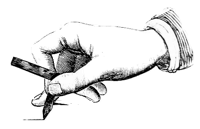Modern rules of Schlagball
Schlagball (“bat-ball” or “hit-ball”) was once very popular in schools and as an amateur club game in Germany; at its peak in the early 20th century it was even advanced as the German "national pastime" on a par with baseball in America and cricket in England. A member of the longball family, an early form was described by Gutsmuths in 1796 as the “German Ballgame;” to this day it is sometimes called simply Deutschball (“German ball”). Currently it is still played by clubs in the lower Rhine and North Sea coastal regions, especially on the Frisian islands of Langeoog and Spiekeroog, as well as in Silesia where it is recognized as the German version of what Polish-speakers call Palant.
“Schlagball is an ancient sport that was one of the usual team sports from the beginning of the German gymnastics and sports movement in the 19th century, and until well after the Second World War enjoyed great popularity in Germany. Until the 1950s Schlagball was operated competitively as a gymnastic game by the German Gymnastics Federation, then taught for some years in physical education in schools. The last official German championship was won in 1954 by the Arbergen Gymnastics Union from Bremen. It has since become quieter, but far from dead.”
Game Concept
Schlagball is a game in which two parties of 6 to 12 players confront one another. The contest is over the right to bat, and the higher score after a fixed playing time. The batting party (after Gutsmuths “the ruling party”) defends the right to bat and the field or catching party (after Gutsmuths “the serving party”) tries to win it. The batting party with their successive batters occupy the hitting crease [Schlagmal] and attempt through hits to bring their runs to the running crease [Laufmal] and back.
The field party (the catchers) occupy the running field [Lauffeld]] and the angled zone [Schrägraum] in any arrangement. The fielders try to catch the struck ball or pick it up, or through passing to encircle the running batters or hit them, or to drive them over the boundaries of the running field, or to throw the back ball into the hitting crease to prevent the opponents from winning further points.
By successful fielding play by the catching party, with each changeover point [Wechselpunkt] in which the field party seizes the right to hit, it becomes the new batting party. In connection with the change of possession of the hitting crease, members of the new catching party can immediately plug [abgeworfen] players of the new batting party.
Equipment
The game equipment is a leather ball, the Schlagball. The weight of the ball before the game is at least 70 g, not exceeding 85 g [2.5 - 3 oz.], the circumference 19 cm to 21 cm [7.5 - 8.25 in.]. The leather is not to be brightly colored because of the glare in the sunshine. The regulation ball should be red, but with the consent of both teams any color is allowed.
The bat [Schlagholz “hit-wood”], also called the “clip” [Klippe], may be any length; it must be of uniform natural wood and circular in cross section and may be at the lower end up to 3 cm [1.25 in.] thick. The handle end and the shank of the wood may be thinner and provided with a hand sling or end-knob. The bat should not be artificially weighted. Wrapping wire, leather and the like are prohibited. Each player is allowed to use his own bat. All bats placed in the play area are common.
The touch posts [Tickstangen] are inserted in the ground 10 meters from the end of the running field, 4 meters apart.
Playing field
The rectangular pitch is 70 m x 25m [76 x 27 yards], with a further wide hitting field which results from an extension of the diagonals through the pitch. The ground line is the batting crease [Schlagmal], and the opposite line the fielding crease [Fangmal]. 10 m in front of the fielding crease are two touch posts at a distance of 4 m apart. The running goals are the touch posts. Behind the pitch, the extensions of the diagonals through the pitch enclose the wide hitting field.
In Gutsmuths' rules the fielding crease is the running goal; in the newer rules there are only the touch posts.
Tr. from German Wikipedia by W. C. Hicklin 2016

